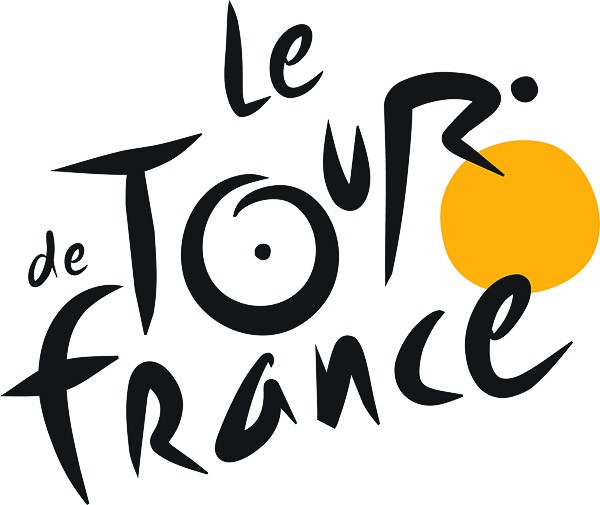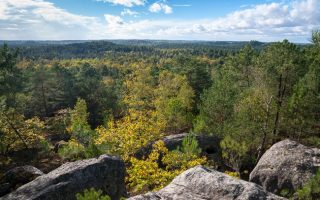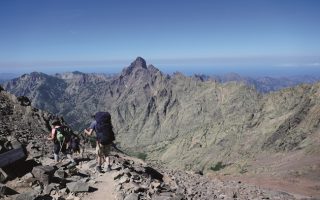The Western Pyrénées: The Mountain Less Travelled

The steep, tightly snaking drive up to the La Pierre Saint-Martin in Pyrénées-Atlantiques may leave you feeling a little giddy, but the views from the top will soon clear your head. Perched up high in the mountains bordering Spain, this small family ski resort has a relatively low profile. But this year it enjoyed its moment of fame because, for the first time, La Pierre Saint-Martin provided the finish line for stage 10 of the Tour de France on July 14.
Two of the stages of ‘Le Tour’ took place in this area – winding, looping and climbing through Pyrénées-Atlantiques and Hautes-Pyrénées in the mountainous south-west. Stage 10 started in Tarbes and curved round 167km, reaching 1,610m altitude at La Pierre Saint-Martin, and Stage 11 left the town of Pau and soared to the punishing heights of the famous Col du Tourmalet at 2,115m above sea level, before finishing up in the ski resort town of Cauterets some 188km later.
The cyclists of Le Tour may not have had time to take in the scenery as they powered through, but for those moving at a more relaxed pace, this corner of France has a whole lot to offer. It boasts a rich history and a strong culinary tradition, so there’s plenty to pull in the culture buffs and foodies. As a bonus, for those who like to escape the crowds, it’s often mysteriously left off the itineraries of many visitors, so when you venture up into the mountainous playground of the Pyrénées and surrounding towns, you sometimes get the feeling you have the place to yourself.
Pyrénéean Playground
Le Tour took over La Pierre Saint-Martin on July 14, but the day before the locals had other business to take care of. Each July 13, the communities on both the French and Spanish sides of the mountain come together at the border, to commemorate a peace treaty, La Junte de Roncal, which dates back to the 14th century. The precise origins of this treaty are unclear, but one version has it that French farmers allowed grazing livestock to drink at a spring on the Spanish side of the border. This reputedly inflamed the sensibilities of the Spanish farmers and led to bloodshed. Peace was finally reached and, to this day, citizens of both countries meet at the border, where the French mayor makes a gift of three cows to the Spanish mayor and the two sides renew their agreement over use of the pastures.
These days, La Pierre Saint-Martin’s main draw is it’s 25km of pistes and a friendly atmosphere which makes it a winner for intermediate skiers and families with children. However, there’s also plenty to do in the summer, including challenging hikes – the village is on the gigantic GR10 hiking trail, which stretches from the Mediterranean to the Atlantic – plus mountain and road biking opportunities galore.
Cauterets, the finish line of Stage 11 of Le Tour, is also a popular ski resort – in 2013 it had the heaviest snowfall of any in the world. And if the mountains around Cauterets are impressive in the winter, they’re every bit as stunning during the summer. One of the most beautiful spots is the Pont d’Espagne, so called because it’s on an old mule route across the Spanish border. A cross-country ski area in winter, it becomes a walker’s paradise during summer– a place of abundant waterfalls, turquoise-coloured lakes, towering mountains and lush valleys.
From the car park you can either walk or take a cable car and chair lift to the start of some of the best hikes. One of the most popular trails takes you to the banks of the crystalline Lac de Gaube, which is surrounded by the jagged peaks of the mountains. If you’re more of a stroller than a hiker, you can still enjoy the views from the valley floor, where the mountains tower over you on both sides as you follow the river through some of the most spectacular scenery that France has to offer.
Villes Historiques
Pau, the capital of the Pyrénées-Atlantiques, is the starting point for Stage 11 of Le Tour, and also a good base for visitors. It’s a small city, with around 80,000 inhabitants, but one that knows how to play to its strengths. Pau boasts palm trees, lush green gardens, panoramic mountain views, impressive architecture, great restaurants and a thriving local wine culture. The Boulevard des Pyrénées, which sweeps around the edge of the upper part of the city, has views that stretch down to terraced gardens and the river below, then out to a Pyrénéean panorama across the horizon. There are plenty of bars and restaurants here, so you can enjoy your aperitif while taking in the view.
Make an appointment to visit the Château de Pau, a fascinating 14th-century fortress which was transformed into a spectacular Renaissance palace in the 16th century. It was the birthplace of King Henri IV who, it’s said, was welcomed into the world with a local tradition: a drop of Jurançon wine and some raw garlic.
In the 19th century, Pau became popular with well-to-do families from England, America and other European countries, who were drawn by the Pyrénéean waters’ reputed healing qualities and built a host of handsome villas which give the city its grandiose feel.
In addition, each May, Pau hosts not one but two Grand Prix motor races – a modern and a vintage version. Wandering around, you’ll spy the markings painted on Pau’s roads, to guide the racing drivers.
By comparison, Tarbes, a working town and the capital of Hautes-Pyrénées, is low-key. It’s often passed by, but one of its key attractions is the Haras National – an equestrian centre built by Napoléon at the start of the 19th century that’s set in the heart of the town. Visitors can book guided tours, and once a year the centre hosts the mammoth equestrian event Equestria, Festival de la Création Équestre (see our review here).
Tarbes has been rather eclipsed by its nearby neighbour, Lourdes. Each year, some six million visitors from all over the world every year come to visit the grotto just outside Lourdes, the Grotte de Massabielle, where it’s said that, in 1858, a young girl called Bernadette Soubirous saw a vision of the Virgin Mary 18 times. A chapel was built there a few years later and the Catholic Church declared the area a place of national pilgrimage. Devotees came in droves, from increasingly further afield, and now arrive from the world over to drink the holy water, touch the stone of the grotto, smooth from all the passing hands, take part in a candlelit procession or simply see what it’s all about. Soubirous was proclaimed Saint Bernadette in 1933, and an underground basilica the size of a football stadium was completed in 1958, to cater for the pilgrims.
The Sanctuaires Notre-Dame de Lourdes, a place for prayer, contemplation and taking mass, is distanced from Lourdes’ main thoroughfares. In the city’s streets, a thriving trade in hospitality, memorabilia and merchandise has somewhat taken over what was once a small mountain town. This aside, Lourdes is well worth a visit.
Fromage et Vins
Each winter, the Pyrénéean summits are the realm of skiers and boarders. However, during the summer, when all but the most stubborn snow has melted and the mountainsides are a verdant green, they belong to the farmers and their livestock. Cows, sheep and goats graze freely on the pastures and the artisan cheese made from their milk is a huge part of the local culinary culture. Try the Maison du Vin et Fromage in Oloron-Sainte-Marie for a fine selection of local wares, and if you want to understand more about the cheese-making process, the area’s farmers are increasingly inviting visitors to come and see how they work.
To wash all that cheese down, you’ll need a nice glass of local wine. This part of the south-west is home to some highly respected domains, and there are plenty of opportunities for tasting in local vineyards. For the local Madiran reds, visit the vineyard of Vignobles Brumont, take a guided tour and enjoy a tasting session. To sample the dry and sweet Jurançon whites, the Maison des Vins has information on when to visit individual vineyards in the area plus a tasting room with a selection of local varieties.
And Relax…
Visiting a new region can be tiring so what better excuse do you need to relax into one of the area’s incredible spas? Balneotherapy – treating of illnesses by bathing in mineral waters – is such an important part of healthcare here that doctors provide prescriptions for weeks of therapy at a time.
If all you really need is a bit of rest and relaxation, indulge yourself at Aquensis in Bagnères-de-Bigorre, Cauterets’ Les Bains du Rocher or Luzéa’s Luz Saint Sauveur. Bathe in the warm thermal waters, take in the panoramic mountain views and start planning your next trip to this rich, dramatic and diverse area of France.
Ski & Board Destinations: Slopes to savour in this area of the south-west
Resorts in the Hautes-Pyrénées:
Domaine du Tourmalet, Barèges-La Mongie, Gavarnie-Gedre, Val Louron, Saint-Lary Soulon, Cauterets, Piau-Engaly, Luz Ardiden, Hautacam
www.tourism-midiPyrénées.co.uk
Resorts in the Pyrénées-Atlantiques:
Arete, Artouste, Col d’Aubisque, Gourette, Iraty, Lanne/Isarbe, Le Somport/Candanchu, Pierre Saint Martin, Pont de Camps-Fabrèges
www.france-montagnes.com/departement/64
From France Today magazine
Share to: Facebook Twitter LinkedIn Email
More in le tour de france
Leave a reply
Your email address will not be published. Required fields are marked *



